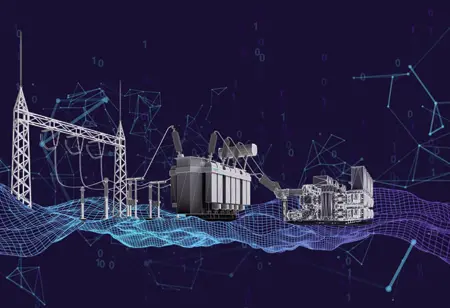Thank you for Subscribing to Electrical Business Review Weekly Brief
I agree We use cookies on this website to enhance your user experience. By clicking any link on this page you are giving your consent for us to set cookies. More info
Electric Motors: Empowering the Electrical Industry with Efficiency and Innovation
Electric motors have revolutionized the electrical industry, driving various applications across different sectors.

By
Electrical Business Review | Monday, July 24, 2023
Stay ahead of the industry with exclusive feature stories on the top companies, expert insights and the latest news delivered straight to your inbox. Subscribe today.
Electric motors have emerged as the driving force behind the electrical industry, powering various applications across various sectors.
FREMONT, CA: Electric motors have revolutionized the electrical industry, driving various applications across different sectors. These versatile devices have transformed how we live and work, from powering industrial machinery to driving electric vehicles. In this article, we explore the significance of electric motors in the electrical business, their impact on energy efficiency and sustainability, and emerging innovations shaping this essential technology's future.
1. The Backbone of Electrical Applications
Electric motors are the backbone of numerous electrical applications, converting electrical energy into mechanical energy. They are at the heart of various devices, from household appliances and HVAC systems to industrial machinery and electric vehicles.
Electric motors play a pivotal role in powering conveyor belts, pumps, compressors, and other essential equipment in the industrial sector. In the automotive industry, electric motors have enabled the shift towards electric and hybrid vehicles, reducing greenhouse gas emissions and promoting sustainability.
2. Efficiency and Energy Savings
Electric motors are renowned for their high efficiency, a key factor in reducing energy consumption and operating costs. Advances in motor technology, such as using rare-earth magnets and variable frequency drives (VFDs), have significantly improved motor efficiency, minimizing energy wastage and contributing to a greener future.
Variable frequency drives, in particular, enable motors to adjust their speed and power consumption based on demand, optimizing energy usage and extending motor lifespan. These drives are widely used in industrial applications, where motor speed requirements vary according to production demands.
3. Environmental Benefits and Sustainability
The adoption of electric motors in various industries has brought substantial environmental benefits. The transportation sector has witnessed reduced emissions by replacing conventional combustion engines with electric motors in vehicles, contributing to improved air quality and decreased reliance on fossil fuels.
Moreover, in industries like manufacturing and agriculture, the transition to electric motor-driven equipment has significantly reduced carbon footprints, fostering a more sustainable and eco-friendly approach to production.
4. Innovations in Electric Motor Technology
In recent years, electric motor technology has seen remarkable innovations, propelling the industry forward and expanding its applications:
a. Permanent Magnet Motors: These motors utilize powerful permanent magnets, reducing energy losses and enhancing efficiency. They find extensive use in electric vehicles and appliances due to their compact size and higher power density.
b. Brushless DC Motors: Brushless DC motors eliminate the need for brushes, reducing wear and increasing motor efficiency. They are widely used in high-performance applications, including robotics, computer peripherals, and drones.
c. Superconducting Motors: Superconducting materials enable motors to operate with zero electrical resistance, resulting in near-perfect efficiency. These motors can potentially revolutionize large-scale industrial applications by drastically reducing energy losses.
d. Internet of Things (IoT) Integration: Electric motors are becoming more intelligent by integrating IoT technologies. IoT-enabled motors can communicate, monitor performance, and predict maintenance needs, optimizing operations and reducing downtime.
5. Challenges and Future Outlook
While electric motors offer numerous benefits, certain challenges persist. For instance, sourcing rare-earth materials used in high-efficiency motors can present supply chain vulnerabilities. However, ongoing research and development efforts aim to mitigate these challenges and seek sustainable alternatives.
The future outlook for electric motors is promising, with a strong focus on enhancing efficiency, reliability, and eco-friendliness. As the world moves towards greater electrification and clean energy initiatives, electric motors will play an instrumental role in achieving energy efficiency targets and advancing sustainable development.
Conclusion
Electric motors have emerged as the driving force behind the electrical industry, powering various applications across various sectors. Electric motors have become indispensable in our modern world, from promoting energy efficiency and sustainability to enabling innovative technologies.
With ongoing advancements in motor technology and increasing integration of IoT capabilities, the future of electric motors holds tremendous potential for enhancing energy efficiency, reducing environmental impact, and revolutionizing diverse industries.
As the electrical business continues evolving, electric motors will remain at the forefront of transformative innovations, empowering businesses and individuals with efficient, reliable, and sustainable solutions for a brighter and greener tomorrow.








